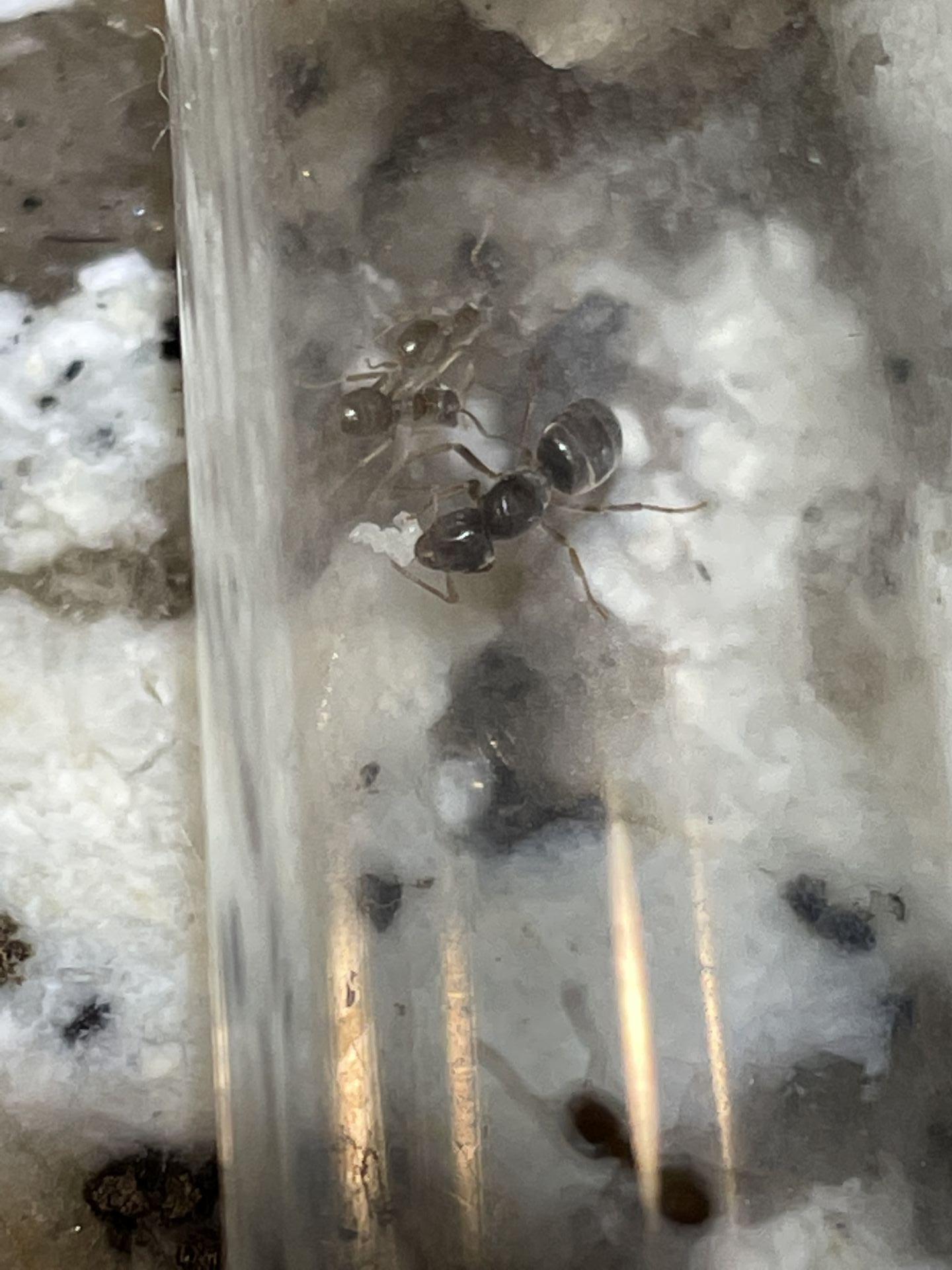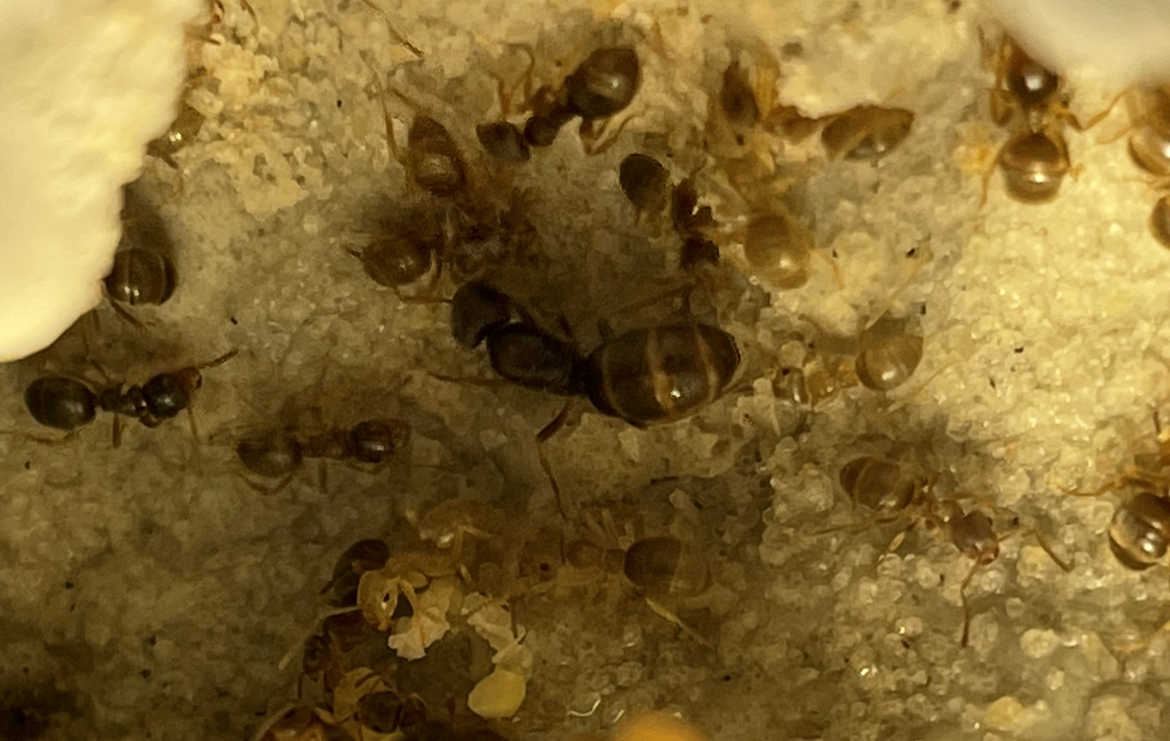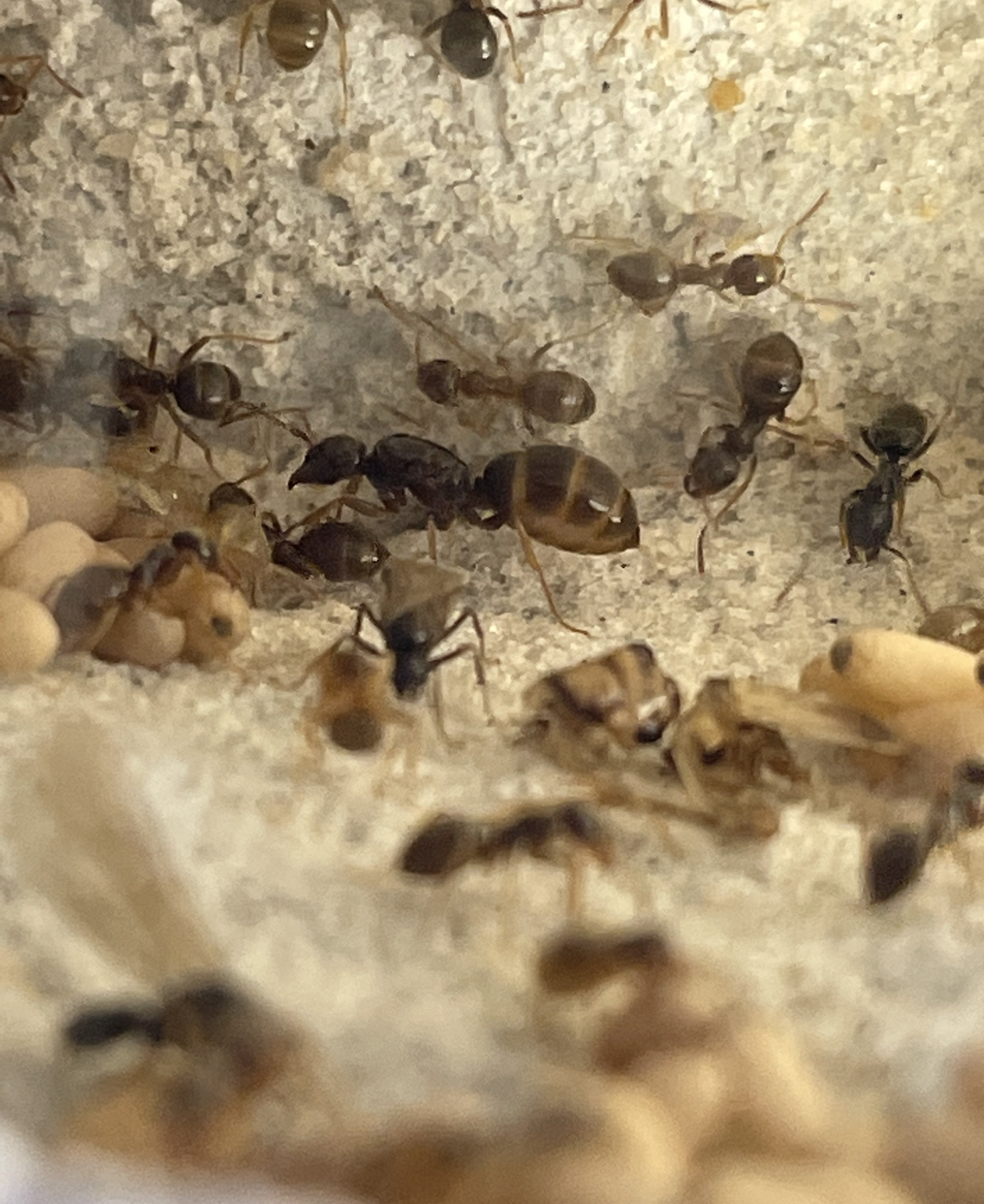
Edited by Manitobant, May 5 2023 - 3:52 PM.


Edited by Manitobant, May 5 2023 - 3:52 PM.
How are these doing?
Hi there! I went on a 6 month or so hiatus, in part due, and in part cause of the death of my colonies.
However, I went back to the Sierras, and restarted my collection, which is now as follows:
Aphaenogaster uinta, Camponotus vicinus, Camponotus modoc, Formica cf. aserva, Formica cf. micropthalma, Formica cf. manni, Formica subpolita, Formica cf. subaenescens, Lasius americanus, Manica invidia, Pogonomyrmex salinus, Pogonomyrmex sp. 1, Solenopsis validiuscula, & Solenopsis sp. 3 (new Sierra variant).
i put them back into hibernation because they stopped laying and ate their eggs, presumably from lack of hosts. Hosts were also slowly dying. I’ll take them out again in spring.How are these doing?
Edited by Manitobant, March 17 2021 - 6:09 AM.
one is left. She was woken up a few days ago, but only has a single host. I'm giving her more callows now, and plan to boost with pupae soon.Update?
update?
1X Pogonomyrmex occidentalis 40-50 Workers
1X Solenopsis molesta 10 Workers (mono)
Ants I Want: Crematogaster sp, Camponotus Sp., Ponera Pennsylvanica, Mymercocystus sp.
My Youtube channel: https://www.youtube....kUjx-dPFMyVqOLw
Join Our Fledgling Discord Server https://discord.com/...089056687423489
update????


Edited by Manitobant, December 14 2021 - 10:46 AM.
awesome!!!!! ![]()
Have any bios eclosed yet?
"God made..... all the creatures that move along the ground according to their kinds (including ants). And God saw that it was good. Genesis 1:25 NIV version
Keeping:
Tetramorium immigrans Camponotus vicinus, modoc, novaeboracensis, herculeanus
Formica pallidefulva, argentea Solenopsis molesta
Formica cf. aserva Lasius brevicornis, neoniger
Edited by Manitobant, April 13 2022 - 10:53 AM.
This is the first time I've actually seen a physogastric parasitic Lasius queen. Glad to see your parasitics are doing well!
シグナチャーです。예.
Parasitic Lasius are actually physogastric more common than non-parasitic Lasius in the early stages, since they lay wholesale batches of eggs all at once and grow a ton faster than their non-parasitic counterparts.
"God made..... all the creatures that move along the ground according to their kinds (including ants). And God saw that it was good. Genesis 1:25 NIV version
Keeping:
Tetramorium immigrans Camponotus vicinus, modoc, novaeboracensis, herculeanus
Formica pallidefulva, argentea Solenopsis molesta
Formica cf. aserva Lasius brevicornis, neoniger
How are they doing now almost a year later?
Better get some host pupae as quick as you can!
After getting biological workers they sorta began fizzling out for some reason.
I experienced the same with my parasitic Lasius (they then proceeded to die), my guess is that in the normal colonies they invade they are boosted by the remaining host brood in the nest, and this may aid in success for some species.
Hi there! I went on a 6 month or so hiatus, in part due, and in part cause of the death of my colonies.
However, I went back to the Sierras, and restarted my collection, which is now as follows:
Aphaenogaster uinta, Camponotus vicinus, Camponotus modoc, Formica cf. aserva, Formica cf. micropthalma, Formica cf. manni, Formica subpolita, Formica cf. subaenescens, Lasius americanus, Manica invidia, Pogonomyrmex salinus, Pogonomyrmex sp. 1, Solenopsis validiuscula, & Solenopsis sp. 3 (new Sierra variant).
After getting biological workers they sorta began fizzling out for some reason.
I experienced the same with my parasitic Lasius (they then proceeded to die), my guess is that in the normal colonies they invade they are boosted by the remaining host brood in the nest, and this may aid in success for some species.
Yes, Lasius Subumbratus do this a lot in the wild.
0 members, 0 guests, 0 anonymous users